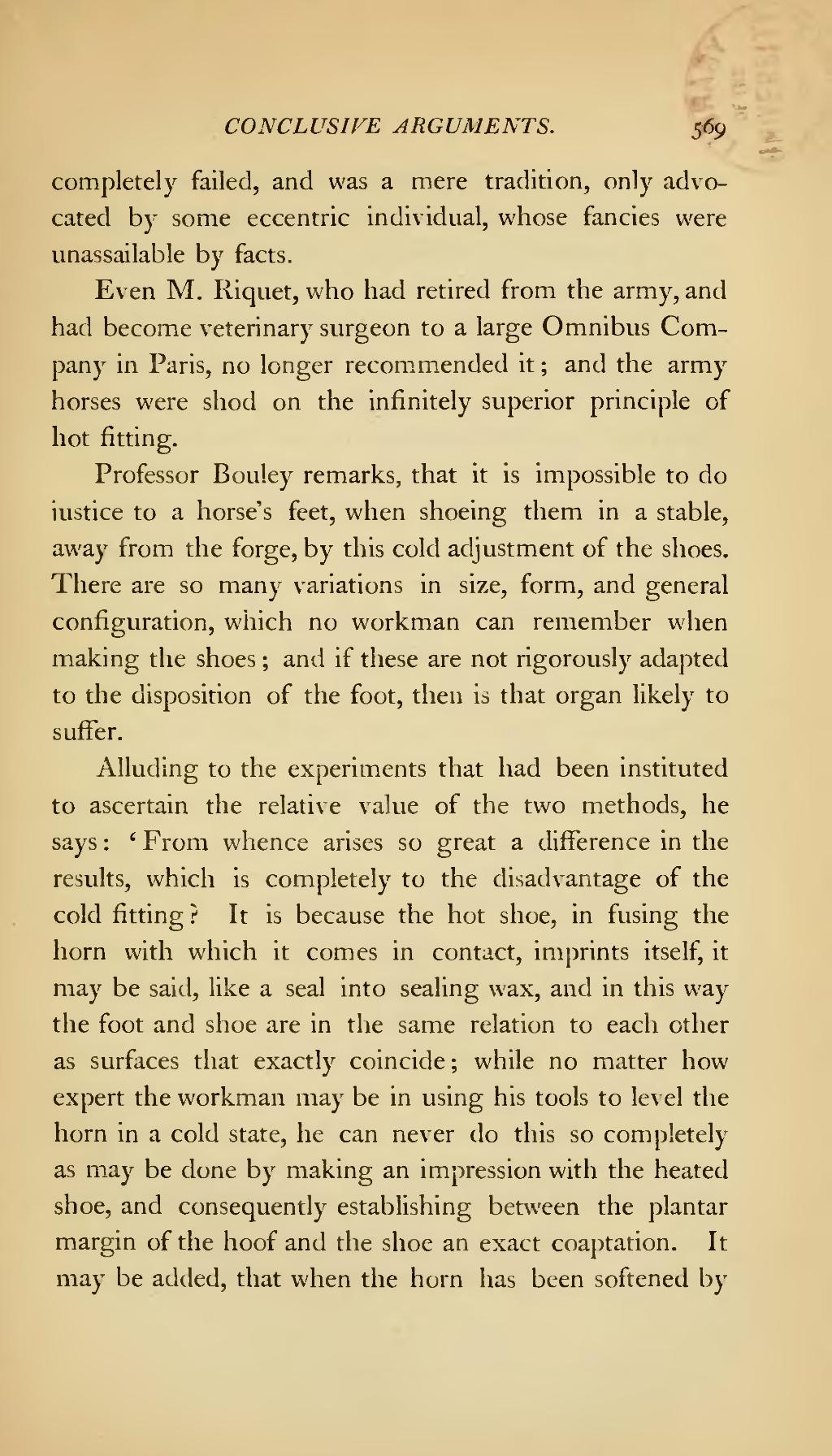completely failed, and was a mere tradition, only advocated by some eccentric individual, whose fancies were unassailable by facts.
Even M. Riquet, who had retired from the army, and had become veterinary surgeon to a large Omnibus Company in Paris, no longer recommended it; and the army horses were shod on the infinitely superior principle of hot fitting.
Professor Bouley remarks, that it is impossible to do justice to a horse's feet, when shoeing them in a stable, away from the forge, by this cold adjustment of the shoes. There are so many variations in size, form, and general configuration, which no workman can remember when making the shoes; and if these are not rigorously adapted to the disposition of the foot, then is that organ likely to suffer.
Alluding to the experiments that had been instituted to ascertain the relative value of the two methods, he says: 'From whence arises so great a difference in the results, which is completely to the disadvantage of the cold fitting? It is because the hot shoe, in fusing the horn with which it comes in contact, imprints itself, it may be said, like a seal into sealing wax, and in this way the foot and shoe are in the same relation to each other as surfaces that exactly coincide; while no matter how expert the workman may be in using his tools to level the horn in a cold state, he can never do this so completely as may be done by making an impression with the heated shoe, and consequently establishing between the plantar margin of the hoof and the shoe an exact coaptation. It may be added, that when the horn has been softened by
